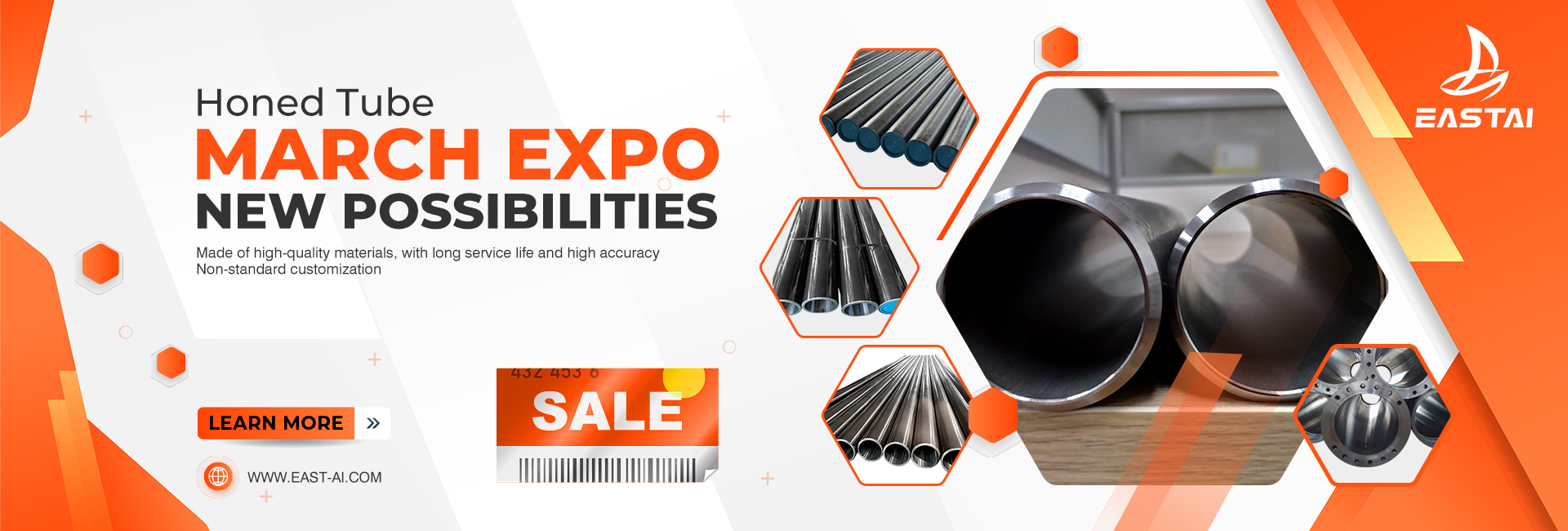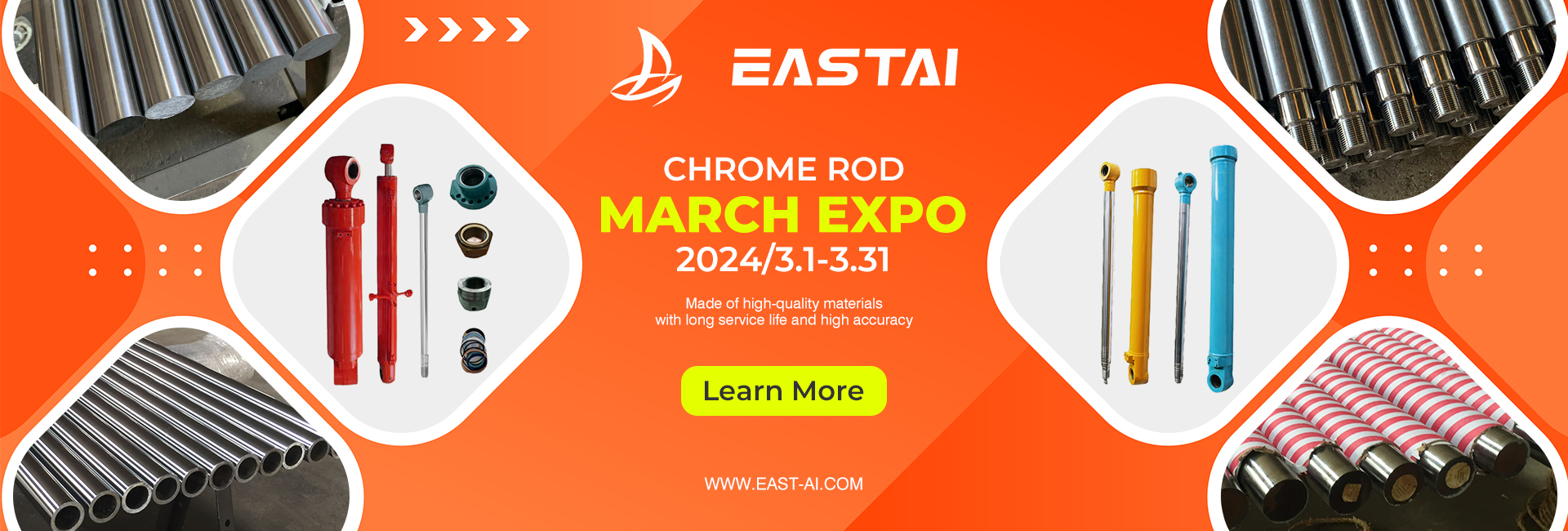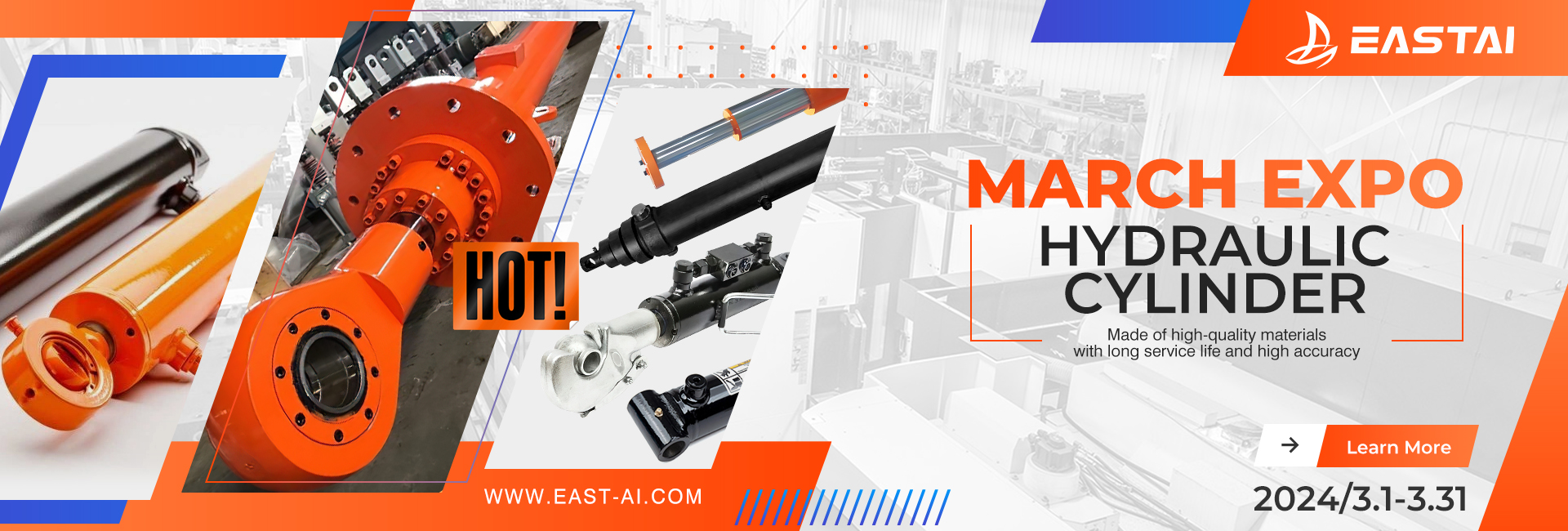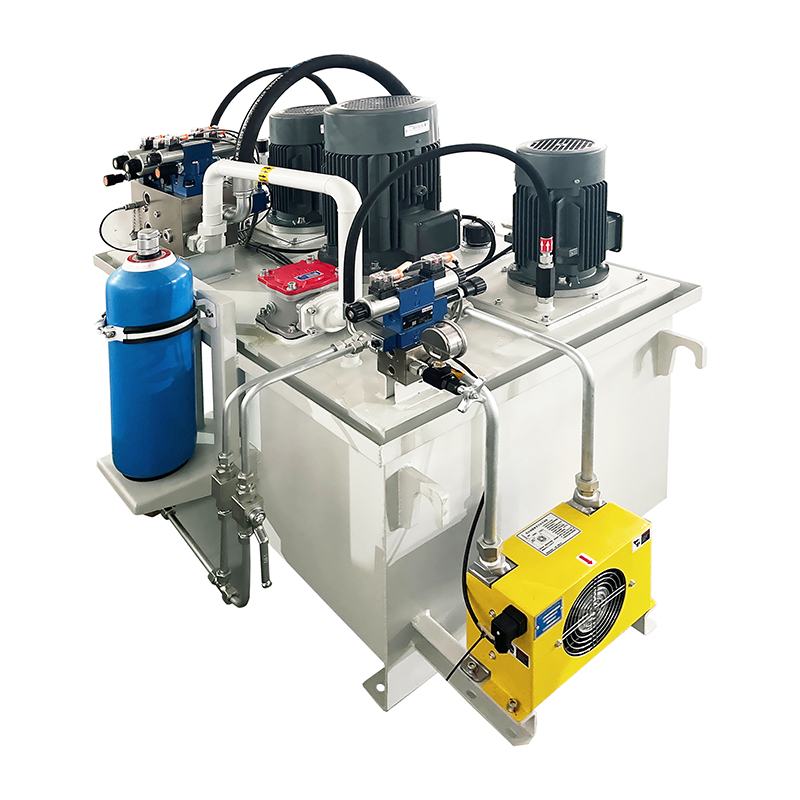The oil pressure unit (also known as the hydraulic station) is usually equipped with high-precision components. In order to make the system perform properly and prolong the service life of the system, please pay attention to the following methods and perform proper inspection and maintenance.
1. Piping oil washing, operating oil and oil seal
1. The piping for on-site construction must undergo complete pickling and flushing
(Oil washing) procedure in order to completely remove foreign matter remaining in the piping (this work must be carried out outside the oil tank unit). Flushing with VG32 operating oil is recommended.
2. After the above work is completed, reinstall the piping, and it is best to do another oil wash for the whole system. Generally, the cleanliness of the system should be within NAS10 (inclusive); the servo valve system should be within NAS7 (inclusive). This oil cleaning can be done with VG46 operating oil, but the servo valve must be removed in advance and replaced by a bypass plate before oil cleaning can be done. This oil washing work must be done after the preparation for the test run is completed.
3. The operating oil must have good lubricity, anti-rust, anti-emulsification, defoaming and anti-deterioration properties.
The applicable viscosity and temperature range of the operating oil applicable to this device are as follows:
Optimum viscosity range 33~65 cSt ( 150~300 SSU ) AT38℃
It is recommended to use ISO VG46 anti-wear oil
Viscosity index above 90
Optimum temperature 20℃~55℃ (up to 70℃)
4. Materials such as gaskets and oil seals should be selected according to the following oil quality:
A. Petroleum oil – NBR
B. water. Ethylene glycol – NBR
C. Phosphate-based oil — VITON. TEFLON
picture
2. Preparation and start-up before test run
1. Preparation before test run:
A. Check in detail whether the screws and joints of the components, flanges and joints are really locked.
B. According to the circuit, confirm whether the shut-off valves of each part are opened and closed according to the regulations, and pay special attention to whether the shut-off valves of the suction port and the oil return pipeline are really opened.
C. Check whether the shaft center of the oil pump and motor is shifted due to transportation (the allowable value is TIR0.25mm, the angle error is 0.2°), and turn the main shaft by hand to confirm whether it can be easily rotated.
D. Adjust the safety valve (relief valve) and unloading valve of the outlet of the oil pump to the lowest pressure.
2. Start:
A. Intermittent start first to confirm whether the motor matches the designated running direction of the pump
.If the pump runs in reverse for too long, it will cause internal organs to burn and get stuck.
B. Pump starts with no load
, while watching the pressure gauge and listening to the sound, start intermittently. After repeated several times, if there is no sign of oil discharge (such as pressure gauge vibration or pump sound change, etc.), you can slightly loosen the pump discharge side piping to discharge the air. Restart again.
C. When the oil temperature is 10℃cSt (1000 SSU~1800 SSU) in winter, please start according to the following method to fully lubricate the pump. After inching, run for 5 seconds and stop for 10 seconds, repeat 10 times, and then stop after running for 20 seconds 20 seconds, repeat 5 times before it can run continuously. If there is still no oil, please stop the machine and disassemble the outlet flange, pour in diesel oil (100~200cc), and rotate the coupling by hand for 5~6 turns Reinstall it and start the motor again.
D. At low temperature in winter, although the oil temperature has risen, if you want to start the spare pump, you should still do the above intermittent operation, so that the internal temperature of the pump can be continuously operated.
E. After confirming that it can be spit out normally, adjust the safety valve (overflow valve) to 10~15 kgf/cm2, keep running for 10~30 minutes, then gradually increase the pressure, and pay attention to the operation sound, pressure, temperature and Check the vibration of the original parts and piping, pay special attention to whether there is oil leakage, and only enter full-load operation if there are no other abnormalities.
F. Actuators such as pipes and hydraulic cylinders should be fully exhausted to ensure smooth movement. When exhausting, please use low pressure and slow speed. You should go back and forth several times until the oil flowing out has no white foam.
G. Return each actuator to the original point, check the height of the oil level, and make up for the missing part (this part is the pipeline, the capacity of the actuator, and what is discharged when exhausting), remember not to use it on the hydraulic cylinder Push out and replenish operating oil in the state of accumulator pressure to avoid overflow when returning.
H. Adjust and position the adjustable components such as pressure control valves, flow control valves, and pressure switches, and officially enter normal operation.
J. Finally, don’t forget to open the water control valve of the cooler.
3. General inspection and maintenance management
1. Check the abnormal sound of the pump (1 time/day):
If you compare it with the normal sound with your ears, you can find the abnormal sound caused by the blockage of the oil filter, air mixing, and abnormal wear of the pump.
2. Check the discharge pressure of the pump (1 time/day):
Check the pump outlet pressure gauge. If the set pressure cannot be reached, it may be due to abnormal wear inside the pump or low oil viscosity. If the pointer of the pressure gauge shakes, it may be because the oil filter is blocked or air is mixed in.
3. Check the oil temperature (1 time/day):
Confirm that the cooling water supply is normal.
4. Check the oil level in the fuel tank (1 time/day):
Compared with usual, if it becomes lower, it should be supplemented and the cause should be found out and repaired; if it is higher, special attention must be paid, there may be water intrusion (such as cooler water pipe rupture, etc.).
5. Check the temperature of the pump body (1 time/month):
Touch the outside of the pump body by hand and compare it with the normal temperature, and you can find that the volumetric efficiency of the pump becomes lower, abnormal wear, poor lubrication, etc.
6. Check the abnormal sound of the pump and motor coupling (1 time/month):
Listen with your ears or shake the coupling left and right with your hands in the stop state, which may cause abnormal wear, insufficient butter and concentricity deviation.
7. Check the blockage of the oil filter (1 time/month):
Clean the stainless steel oil filter first with a solvent, and then use an air gun to blow it out from the inside to the outside to clean it. If it is a disposable oil filter, replace it with a new one.
8. Check the general properties and pollution of the operating oil (1 time/3 months):
Check the operating oil for discoloration, odor, pollution and other abnormal conditions. If there is any abnormality, replace it immediately and find out the cause. Normally, replace it with new oil every one to two years. Before replacing the new oil, be sure to clean around the oil filling port Clean so as not to contaminate the new oil.
9. Check the abnormal sound of the hydraulic motor (1 time/3 months):
If you listen to it with your ears or compare it with the normal sound, you can find abnormal wear and tear inside the motor.
10. Check the temperature of the hydraulic motor (1 time/3 months):
If you touch it with your hands and compare it with the normal temperature, you can find that the volumetric efficiency becomes lower and abnormal wear and so on.
11. Determination of the cycle time of the inspection mechanism (1 time/3 months):
Find and correct abnormalities such as poor adjustment, poor operation, and increased internal leakage of each component.
12. Check the oil leakage of each component, piping, piping connection, etc. (1 time/3 months):
Check and improve the oil seal condition of each part.
13. Inspection of rubber piping (1 time/6 months):
Investigation and update of wear, aging, damage and other conditions.
14. Check the indications of the measuring devices of each part of the circuit, such as pressure gauges, thermometers, oil level gauges, etc. (1 time/year):
Correct or update as required.
15 Check the whole hydraulic device (1 time/year):
Regular maintenance, cleaning and maintenance, if there is any abnormality, check and eliminate it in time.
Post time: Jan-10-2023





